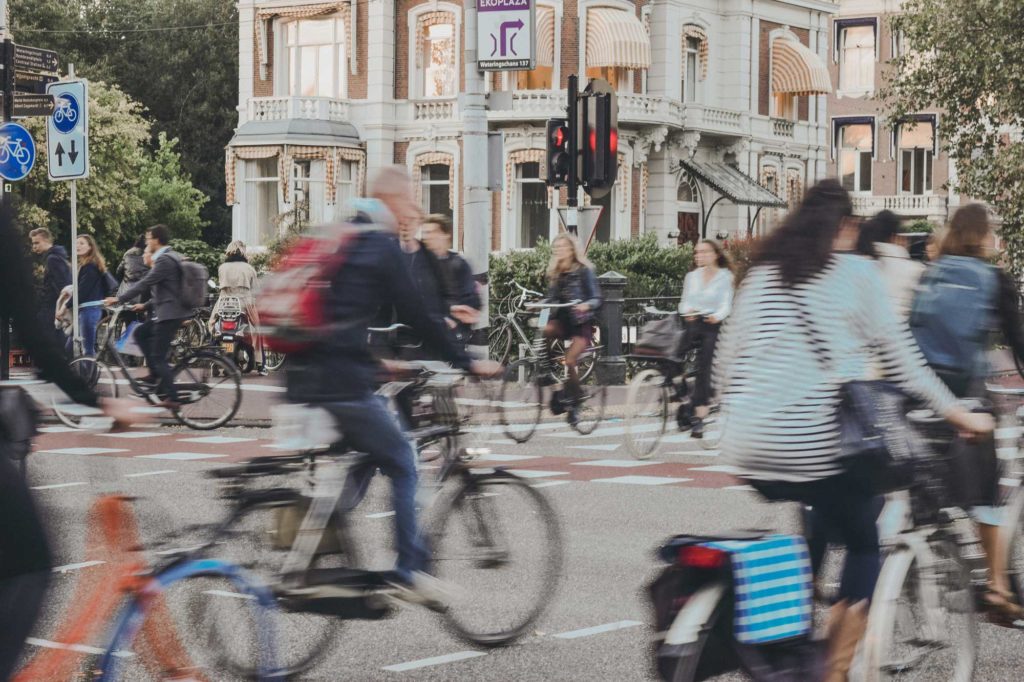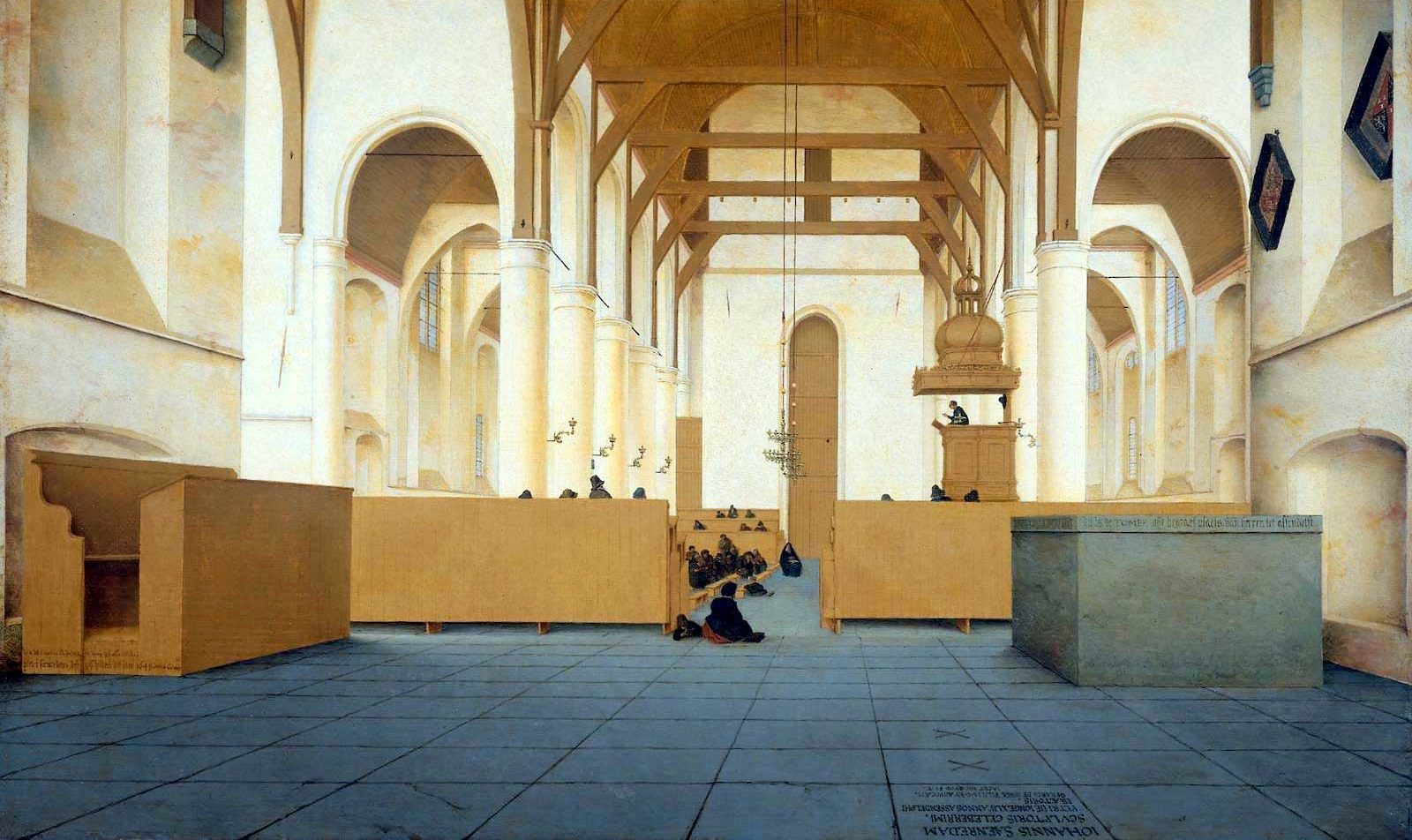BG: It seems like many of the changes that we’ve experienced in the last couple of weeks and months have been things that you’ve been working for and talking about for years: fewer cars on the street, pedestrianized streets. What’s the opportunity here?
Massengale: There are eight and a half million New Yorkers and approximately one million cars in the city. And many of those who own cars have a family – so three-quarters of the households in Manhattan don’t own a car. And that raises the question: Why should we put up with people driving in from other places and polluting the air and running us over and taking up public space with their cars, when we have the best trains and subways in America? The streets are a huge part of the public space in New York City, and three-quarters of that we give to the cars, and we kick people walking to the side of the road.
I think what we have now is an opportunity. We don’t need to go back to normal, or just stick it out—we can use this time to make places that are better than normal. When Victor Dover and I visited Amsterdam while we were writing Street Design, I became a big fan of what’s called “shared space,” which means streets where drivers have to share the road with people walking and riding bikes. Which basically means that the elephants in the room, the cars, have to slow down to the speed of anyone walking or riding nearby.
And in some cases, during this pandemic, that’s starting to happen organically. In many of the streets in New York City right now, especially cross streets, the only traffic is local. And there are people out in the middle of the streets; there are little kids in the street. Of course a couple of streets, for a while, they actually closed to cars altogether, to try to get people more space to move around. This isn’t just New York—the mayor of London has announced he’s going to close a lot of city streets to traffic. Of course, that leaves open the question of how you get around—but the first step toward a more livable city is to make it a city for people and not cars.

Photo of a New York City street by Josh Couch.
I think what we have now is an opportunity. We don’t need to go back to normal, or just stick it out—we can use this time to go back to better than normal.
BG: We could become the post–Robert Moses New York. So what would that policy path look like?
Massengale: I have a whole bunch of answers to that. Ranging from car culture to Modernism with a capital “M.” Not modernity. You and I are modern. But we are not Modernists.
But I want to start with this: while we talk, I’m sitting probably three hundred feet from the Henry Hudson Highway – I refuse to call it a parkway, because it’s not one– facing it. And you know, in California you cannot build a school within a thousand feet of a highway. There’s no question that I’m getting polluted air sitting here.
To go back to Robert Moses: when he built the Henry Hudson, he gave the highway the place of honor in the park, and he buried the railroad under the Esplanade. The Esplanade was a McKim, Mead & White idea, a wonderful idea; the Esplanade is a wonderful place.
And then next to the river he gave the cars the place of honor. This raises the question of Modernism: You look back at what Moses did and before World War II, most of the places he built, like Riverside Park, were quite charming and pleasant. For example, you know the law school at NYU, on Washington Square? Those red-brick Georgian buildings on the Southwest corner of the square?
BG: Of course.
Massengale: It’s one of the last well-designed Georgian buildings built in New York. Designed by a firm named Eggers & Higgins, who were the successors to John Russell Pope, who designed the National Gallery and the Washington Monument and the classical entrance to the Natural History Museum and the music room at the Frick. The building, opened in 1951, was beautiful. Moses liked it so much that he wrote a letter to the president of NYU, saying, All your buildings should look like this. In the future, as NYU builds around the Square, all the buildings should be these beautiful Georgians. Which would obviously have been great, and better than what we have now.

Photo of Vanderbilt Hall from NYU School of Law.
And then what did he do? There are two housing projects south of Washington Square, one designed by I.M. Pei, and another one that’s in the style of Le Corbusier. I’ve taught design studios in Notre Dame and Miami, and I’ve always brought the students to New York. We spend five days walking the streets, looking at principles of architecture and urbanism. When we get to those two housing projects, one of which is quite admired by architects, the students always feel like we’ve left New York.
Moses built those with federal funding. But originally, he’d gone to Eggers & Higgins, and said, I want you to do a plan for this housing. I want it to look just like the law school. But Eggers & Higgins came back soon after, and said, well, we’ve studied this and if we take federal funding, we can’t build Georgian buildings. You must build towers in the park, like the Ville Radieuse. And he said “Okay,” because after World War II, Federal funding mandated Modern architecture and planning. There’s a reason why all post-war housing projects are towers and parking lots: that’s all the federal government would pay for.
BG: So, did this just get into Robert Moses’s soul and corrupt him? Or what happened?
Massengale: Well, he was the Power Broker, right? You can tell from the title of Robert Caro’s biography: that’s what he wanted. He liked neo-Georgian architecture, but he liked power more. He wanted to get things done. So he took the money and ran—in today’s terms, it was billions of dollars. And he did the same thing with streets. Before 1940, he built many lovely parkways, and then the terms of the federal funding changed to, No, you must build an interstate highway: here are the specifications; here are your billions of dollars if you agree. So he said, “Okay, I’ll do it,” and he built highways like the Cross Bronx Expressway. In The Power Broker, Caro makes a convincing argument that the Cross Bronx was the biggest factor in killing the Bronx; that was why the Bronx was burning in the seventies when I moved to the city.
Looking back, the second half of the twentieth century was the time of Modernism. We won World War II by turning car factories into tank factories, and we came back to a world where what’s good for General Motors is good for America, where the man in the gray flannel suit was the new ideal of the American citizen.
I’m a boomer; my father fought in World War II, and when I speak with other people in my generation they tend to agree that our parents’ generation had a lot more PTSD than they admitted to—they went to war, and then they just came home and said, “Okay, now it’s time to get on with it.” And that was the time of Modernism. In the 1950s, we were still run by a national establishment, and really every Establishment institution embraced Modernism. The universities, the museums, all the Rockefeller institutions: they all bought in, entirely. You can sort of see this coming in the thirties, but because of the Depression and the war there wasn’t much building for more than 15 years. By the fifties, though, there was lots of building, and Modernism had triumphed entirely: a switch was flipped. And it wasn’t like someone held a gun to their head and forced them to: it was accepted as the new normal.
BG: Are you saying that Brutalist architecture, and other aspects of modernism, are symptoms of something like cultural PTSD?
Massengale: I’m not going to go that far, but there are people who argue that Gropius suffered from PTSD in World War I and that his own house looks like a bunker because of that. And you know what? Frank Lloyd Wright was born a very long time ago, in 1867 or something like that. We don’t need to let nineteenth century men like Frank Lloyd Wright and Le Corbusier dictate what we think is modern in the twenty-first century.
This is a long preface. But my point is this: I think that this pandemic can allow us to question a lot of Modernism with a capital “M.” Not just sprawl, not just highways, but a lot of aspects of urban form.
BG: Policy-wise, then, in terms of making our cities more livable after the pandemic, and in terms of not getting back to normal, what can we do?
Massengale: I like to quote Winston Churchill: “Never waste a good crisis.” This is, I really think, a once-in-a-lifetime opportunity: we see a glimpse of a better future in this pause. We can decide what kind of a city we want going forward: we can change the streets and change the city. That physical change can, if we do it right, help us to achieve a more democratic society, one that’s less leashed to GDP, less leashed to corporate profits.
Never waste a good crisis.
There is no better place to start making changes to a less car-dependent culture than New York City, because we own the fewest cars, and we have the best transit in North America. That’s what I would have said a couple of months ago at least: obviously right now mass transit is a question. Whatever happens, I don’t believe that we’re going to abandon mass transit and that New Yorkers are all going to be getting cars. For one thing, they won’t be able to afford them. One thing I do think is likely to happen—and as I am sitting here, someone on a CitiBike just rode by me—is that bicycles are going to be a much bigger part of our future. And, in fact, bike sales are absolutely booming right now.
And that means that we need streets where large numbers of people on bicycles, including children, can ride safely. And the protected bicycle lanes we have right now are not the best way to do that, because those have very dangerous points at the intersections.
You know, bicycles have been tied to social radicalism for a long time. In the nineteenth century, they were tied to the suffragette movement. They were supposed to be about personal freedom. They came back big in the sixties, and obviously now they’ve come back again, even before the pandemic, and I think they’re poised to make an even bigger impact. There’s a group called Transportation Alternatives, which promotes safe cycling, streets for people, open streets: they’re obviously feeling like this is their time and they have to seize it.
Bicycles have been tied to social radicalism for a long time.
In the sixties, Europe went through the same thing, and they retooled their cities to be for people rather than for cars. It seems hard to believe now, but I can remember when Paris was absolutely clogged with cars; the Place Vendôme was a parking lot. Well, they changed that.
They did the same thing in Amsterdam: Holland already had a cycling culture, and a couple of decades ago, they just decided that Amsterdam was going to be a city for bicycles and people rather than cars. And today, much of Holland is a cycling and walking paradise. No reason we can’t do that too, and no reason we can’t let this pandemic be the thing that makes the decisive change.

Photo of cyclists in Amsterdam by Norali Nayla.
To varying degrees, every country in Europe has gone in this direction. Now, spurred by the pandemic, London has said, we’re going to make some of the center of the city car-free. They’ve been building up to this for a couple of years, under Sadiq Khan’s mayoralty: he asked Will Norman to be the commissioner of cycling, and Norman said, Only if I can be the Commissioner of Cycling and Walking. Soon after, Sadiq Khan and Norman announced they would make London the best city for walking and cycling in Europe, better than Amsterdam, better than Copenhagen. So this pandemic is really only continuing what they’ve been doing for a couple of years.
And it’s the same thing in Brussels. Pascal Smet is their minister of transportation, and before the Coronavirus pandemic, he was planning to make the center of Brussels much more bike and pedestrian friendly. Now because of the pandemic, they’ve greatly expanded what they were doing.
Milan too, although the Italian approach is different: again it started in the sixties, but after they realized that cars were making day to day life in their cities worse and worse, all the cities in Italy, more or less, dedicated themselves to preserving their centri storici, their historic city centers: if you want to bring a car in a centro storico, you’d better have a good reason, like living there.
In London, they started the process of making better streets by reducing the number of cars using congestion pricing. I was in London the day congestion pricing started. It was magical. I was staying in a hotel on High Holborn, which is an extension of Oxford Street, and the Central Line, the underground line that runs underneath it, was out of service. The day before, it had been much faster to walk down Oxford Street than to travel any other way—the street was just jammed with cars. But the day congestion pricing kicked in, the buses flowed like water running downhill; it was a traffic engineer’s dream.
BG: I’m picturing it as a sort of eschatological vision: Let buses roll down like water, and righteousness like an ever-flowing stream. This is your vision of the new Jerusalem; it’s really beautiful.
Massengale: It was beautiful. But it didn’t last in London, which is a very rich city: people decided they were willing to pay to get into the city, and then Ubers and delivery trucks arrived, and now it’s jammed up again—or it was until recently. We’ll see what Sadiq Khan does.
BG: So why is this important? Isn’t all of this—classical architecture, walkable cities—isn’t this just a matter of taste?
Massengale: “Just a matter of taste.” Let me say this about that. I’ve been working on this topic lately, to try to dig into what we mean when we say that we love a city, when we experience a city, a street, a building, as a good place. The aspect of neuroscience that I’m looking at is called embodied cognition. That says that when you walk down the street, you experience all sorts of things that you’re not entirely aware of; you’re perceiving the world, including the built environment and your body in it, in a profoundly integrated way.
And in addition to experiencing things like space and materials, you also experience things like proportion. Urban designers are—well, you could think of them as “street whisperers”; they’re just more aware than most people, more attuned, to what most people experience in varying degrees. A good friend of mine has nothing to do with architecture or urban planning, but she’s acutely attuned to the space that she’s in. And if she spends too much time in certain spaces—poorly designed spaces, ugly places, sprawl—she gets headaches.
Urban designers are—well, you could think of them as “street whisperers”; they’re just more aware than most people, more attuned, to what most people experience in varying degrees.
BG: That seems in some way connected to the beauty that people perceive in mathematics. Our mutual friend Philip Bess obviously talks about this in terms of the natural law of walkable neighborhoods and walkable communities. He would say that there’s something transcendent and eternal about architectural beauty and proper proportion.
Massengale: It’s not just subjective. It resonates with you even if you’re not aware of it. Phil and I used to talk about natural law a lot, and we had a lot of agreement. Where we would disagree is that Phil would take it to what seemed to me to be a very academic place. “Plato said this, Aristotle said that.” But you know, to some degree, the whole point of natural law is that you don’t have to read about it.
BG: You experience it.
Massengale: Exactly
BG: Well—it can be fun to read about, though.
Massengale: You know, I once saw J. Budziszewski give a Veritas Forum talk on natural law around the time his book Written on the Heart came out. At the end, there was a Q&A, and I brought up classical architecture, the idea that there might be a natural law aspect to architecture, and he was a little dismissive. But when I bought the book, what was on the cover but a couple of beautiful classical columns fronting a courthouse. So, there you go.
To be continued.





